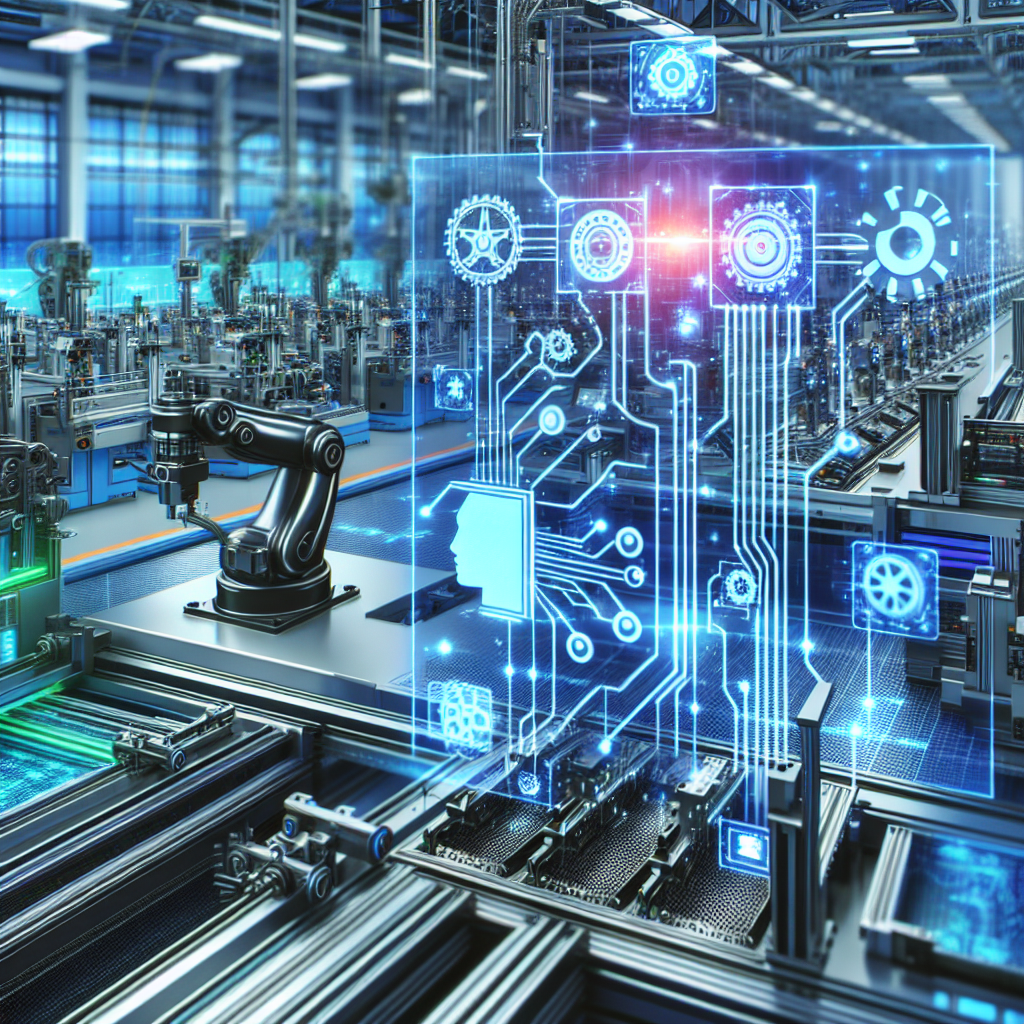In recent years, the manufacturing industry has seen a significant shift towards the adoption of artificial intelligence (AI) technologies to enhance production efficiency. AI has the potential to revolutionize the way manufacturers operate by optimizing processes, reducing costs, and increasing productivity. From predictive maintenance to quality control, AI is being used across various aspects of manufacturing to streamline operations and improve overall performance.
One of the key benefits of using AI in manufacturing is its ability to analyze large volumes of data in real-time and make informed decisions. This enables manufacturers to identify patterns and trends that may not be easily recognizable to human operators, ultimately leading to more efficient production processes. For example, AI-powered predictive maintenance systems can analyze equipment sensor data to predict when machinery is likely to fail, allowing maintenance teams to intervene before a breakdown occurs. This not only minimizes downtime but also reduces the need for costly emergency repairs.
Another area where AI is making a significant impact in manufacturing is in quality control. Traditionally, quality control processes required human operators to inspect products for defects, which can be time-consuming and prone to errors. AI-powered systems, on the other hand, can quickly and accurately detect defects in products using computer vision technology. By automating the inspection process, manufacturers can ensure that only high-quality products reach the market, reducing waste and improving customer satisfaction.
AI is also being used to optimize production scheduling and resource allocation. By analyzing historical production data and real-time information, AI algorithms can predict demand fluctuations and adjust production schedules accordingly. This helps manufacturers avoid overproduction or underproduction, leading to more efficient use of resources and reduced costs. Additionally, AI can optimize inventory management by predicting when and how much raw materials should be ordered, ensuring that production lines never run out of essential supplies.
Furthermore, AI-enabled robots are increasingly being used in manufacturing to perform repetitive tasks with precision and efficiency. These robots can work alongside human operators to increase productivity and reduce the risk of injury. By automating mundane tasks, manufacturers can free up their workforce to focus on more complex and value-added activities, ultimately improving overall efficiency and competitiveness.
In summary, AI has the potential to transform the manufacturing industry by enhancing production efficiency, reducing costs, and improving quality. By leveraging AI technologies, manufacturers can optimize processes, streamline operations, and stay ahead of the competition in today’s fast-paced global market.
FAQs:
1. What are the main challenges in implementing AI in manufacturing?
Implementing AI in manufacturing can be challenging due to factors such as data quality, integration with existing systems, and resistance from employees. Manufacturers need to ensure that they have access to high-quality data to train AI algorithms effectively. Additionally, integrating AI technologies with legacy systems can be complex and time-consuming. Employees may also be resistant to change, fearing that AI will replace their jobs. Overcoming these challenges requires careful planning, communication, and training to ensure a successful implementation.
2. How can AI improve production efficiency in manufacturing?
AI can improve production efficiency in manufacturing by optimizing processes, reducing downtime, and increasing productivity. AI-powered predictive maintenance systems can analyze equipment sensor data to predict when machinery is likely to fail, allowing maintenance teams to intervene before a breakdown occurs. AI-enabled robots can perform repetitive tasks with precision and efficiency, freeing up human operators to focus on more complex activities. AI can also optimize production scheduling and resource allocation by analyzing historical data and real-time information to predict demand fluctuations and adjust production schedules accordingly.
3. What are the benefits of using AI in quality control?
AI can improve quality control in manufacturing by automating the inspection process and detecting defects in products with high accuracy. AI-powered systems can quickly analyze images of products using computer vision technology to identify defects that may not be easily recognizable to human operators. By automating the inspection process, manufacturers can ensure that only high-quality products reach the market, reducing waste and improving customer satisfaction.
4. How can AI optimize inventory management in manufacturing?
AI can optimize inventory management in manufacturing by predicting demand fluctuations and determining when and how much raw materials should be ordered. By analyzing historical production data and real-time information, AI algorithms can forecast future demand and adjust inventory levels accordingly. This helps manufacturers avoid overproduction or underproduction, ensuring that production lines never run out of essential supplies.
5. How can manufacturers ensure a successful implementation of AI in their operations?
To ensure a successful implementation of AI in manufacturing, manufacturers should start by defining clear objectives and identifying areas where AI can add value. They should also ensure that they have access to high-quality data to train AI algorithms effectively. Additionally, it is essential to involve employees in the process, provide them with the necessary training, and communicate the benefits of AI adoption. Manufacturers should also work with experienced AI vendors and partners to help navigate the complexities of implementing AI technologies effectively. By following these best practices, manufacturers can maximize the benefits of AI and enhance production efficiency in their operations.

